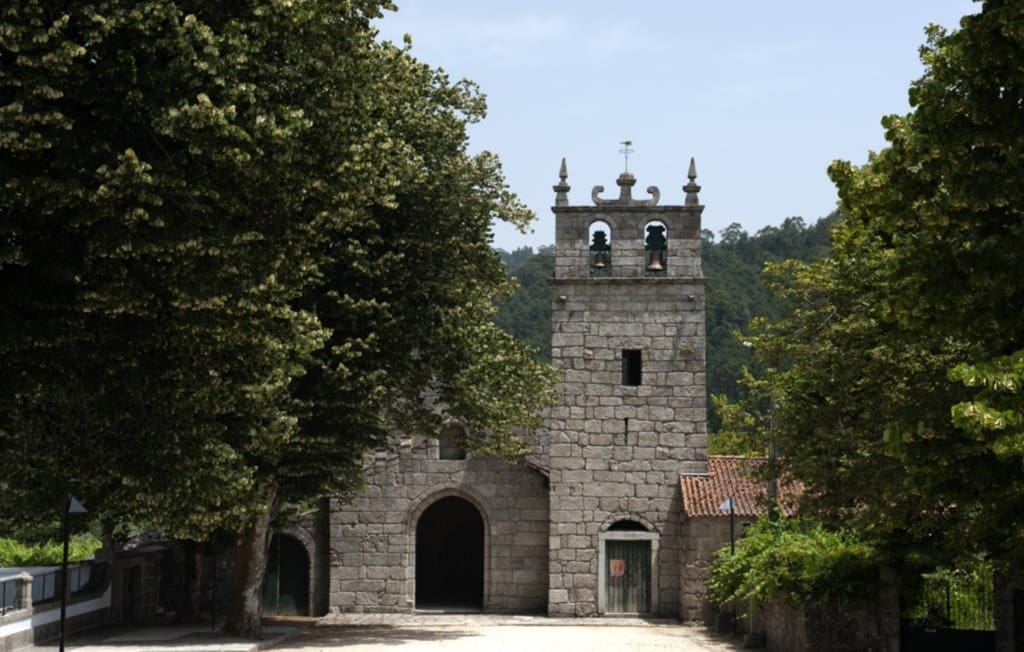The Mosteiro de Mancelos, mentioned as early as 1120, represents an example of the intervention of the lordship in the creation and maintenance of private churches. Initially associated to the line of the Portocarreiros and later to the Fonsecas, the mosteiro was integrated in the order of the Coengos Regrantes de Santo Agostinho.
The inscription dated 1166 in an ashlar of the church suggests the possibility that it was the year of the consecration or dedication of the temple. However, the remaining architectural vestiges indicate a chronology closer to the 13th century, especially visible in the main doorway. This portal is protected by a gallery, explaining its good state of preservation, with elegantly sculpted capitals and a smooth tympanum supported by figures similar to Atlanteans.
The galilee, the tower and other elements, as well as other elements, such as the ameas, confirm the monumentality of the church, which underwent significant modifications in the centuries after it was built. Marks on the face and structural additions are evidence of these transformations. On the south side, where the cloister would presumably be located, an arcosolium still guards a tumulus.
Inside, only the triumphal arch recalls the Romanesque construction, since the space was significantly modified due to counter-reformist interventions. In addition, near the mosteiro, there is a cemetery where the painter Amadeo de Souza-Cardoso (1887-1918), an outstanding figure of Portuguese Modernism, is buried.

 Amarante, Northern Portugal
Amarante, Northern Portugal






 Entidad Responsable
Entidad Responsable 


